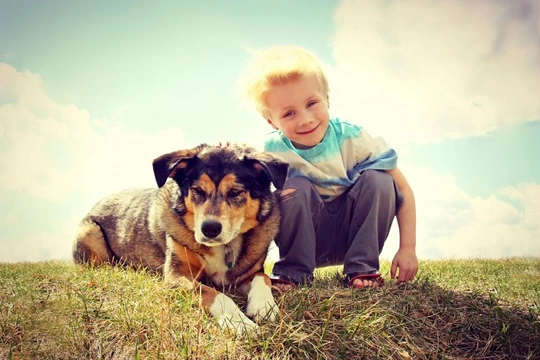
Research shows that children are more likely than adults to be bitten by dogs
During May 2015, North America hosted an awareness-raising event called National Dog Bite Prevention Week, which seeks to raise awareness of risk factors for aggression and dog bites, and collate statistics on humans bitten, in order to make sense of how and why this is likely to happen.
While the UK does not hold any similar awareness-raising event at the moment, there is a lot that can be learnt from study of the American event, particularly when it comes to children and dog safety, as it has been demonstrated from the event’s research that children are exponentially more likely than adults to be bitten by a dog.
In this article, we will look at the potential reasons behind this, what can be done about it, and other insights that have developed as part of the research. Read on to learn more.
Prevent the bite
One of the partner organisations of National Dog Bite Awareness Week, called “Prevent the Bite,” surveyed 710 children by asking them twelve key questions on canine behaviour, signals, and how to behave around dogs. The results were rather startling, with not one of the 710 children surveyed giving the right answer to all twelve questions.
Some of the key results found in the survey were as follows:
- 47% of children answered “yes” to the question “if you are being chased by a dog, should you run away?” which is of course the incorrect answer, and the response most likely to lead to chasing and being bitten.
- 53% of children believed that only certain breeds of dogs could be potentially dangerous, or might bite.
- Children were asked if an angry dog might still have a wagging tail, and 67% said no, when in fact, waving the tail can sometimes be accompanied by defensive aggression or true aggression.
- When asked if a dog that is afraid could potentially be dangerous in the same way as a dog that is angry, a startling 73% of children said no.
- 76% of children said that dogs like to be kissed and hugged, which is again alarming, as many dogs find this threatening or uncomfortable.
Why are children more likely to be bitten?
The reasons behind why children are more likely to be bitten than adults can partially be attributed to the above answers, based on a lack of understanding of canine communication and its interpretation. However, many adults would likely return as many incorrect answers to the survey as the children did, and so a lack of knowledge of dogs can only partially explain the results.
Some of the potential reasons behind why a child is more likely than an adult to be bitten by a dog include:
- Children are less adept at reading and interpreting canine body language than adults that like dogs, and so may misread common scenarios that can escalate to aggression.
- Many children do not know how to respond to or keep themselves safe from aggression, such as is demonstrated by the statistics on how many children think that running away is the best response to a chasing dog.
- Children that live with a dog, or that have had only positive experiences with dogs, may not have developed a full sense of appropriate caution around strange dogs, which for younger children can manifest as a belief that because their own dog is friendly, so are all other dogs too.
- Children are exponentially more likely to approach a strange dog without consulting the owner than an adult is.
- Children sometimes cannot tell when a friendly dog has had enough of their attentions, and to leave them alone.
- Many children believe that small, cute dogs such as the Chihuahua do not display aggression, as demonstrated by the above statistics on beliefs about canine aggression by breed.
- Some dogs that have had bad experiences or rough treatment from children will be more nervous around them than they are around adults.
- Children are not good at interpreting canine fear, or will see the dog’s fear of them as something that they should console, rather than keeping back from.
- The small stature of children compared to adults can lead dominant dogs to assume the dominant or alpha role over a child, when they would not do this with an adult.
How to reduce the chances of your own child being bitten
In order to keep your child safe from a potential bite, there are several rules and guidelines that you should begin teaching your child as soon as they are old enough to understand it.
- Always approach the owner before petting a dog; never touch a strange dog without permission.
- Even if the owner says the dog is ok, read the dog’s cues, and don’t be shy to step back or avoid contact with a dog if you feel unsafe.
- Never approach a strange dog that is injured or afraid; call an adult.
- Don’t disturb a dog that is eating or sleeping, nor a dam with a litter without an adult to manage things.
- Never tease, bully or otherwise deliberately hurt or annoy a dog.
- Remember that all dogs of any shape and size can potentially bite, however unlikely this may seem.
- Remember that all dogs are individuals, with their own personalities and tolerance levels. What one dog enjoys, another may hate!
- Never stare directly into a dog’s eyes, make growling noises in play, or put your face up close to a dogs. Don’t force dogs to hug you, or otherwise force yourselves on them.



